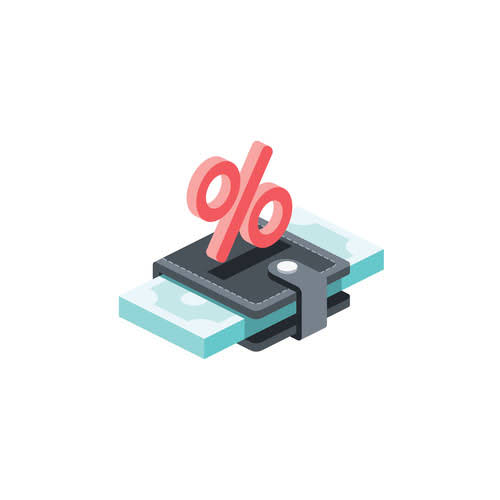
IT and software costs have increased on a dollar basis, which could initially cause some concern for FP&A executives looking to cut costs. However, when reviewed against the overall revenue of the business, this line item has actually gone down slightly. Vertical analysis becomes even more useful when it’s used to assess changing trends over time. For example, comparing current expenses to previous years as a proportion of revenue is far more useful than looking just at the raw numbers. Take, for example, applying vertical analysis to compare employee salaries with revenue. Over three years, you might notice salaries increasing from 31% to 42% of revenue.
What is the Vertical Analysis Formula
The vertical analysis of the balance sheet will result in a common-size balance sheet. The percentages on a common-size balance sheet allow you to compare a small company’s balance sheets to that of a very large company’s balance sheet. A common-size balance sheet can also be compared to the average percentages for the industry. This analysis helps stakeholders identify key insights into a company’s performance. It also keeps finance professionals, and investors informed about business and market trends, enabling better decision-making.
- This converts the raw financial data into standardized percentages allowing for an “apples-to-apples” comparison between different companies even if they have very different revenue figures or asset sizes.
- Vertical analysis shows a comparison of a line item within a statement to another line item within that same statement.
- Vertical analysis is a financial analysis technique used to assess the relative proportions of different line items on a company’s financial statement.
- Once we divide each balance sheet item by the “Total Assets” of $500 million, we are left with the following table.
- Further, when working with large data sets, we recommend cleaning up the data to improve the overall visual representation of the analysis.
- In addition, vertical analysis can aid in financial forecasting by projecting future trends based on historical data.
Vertical Vs Horizontal Analysis
- On the income statement, ACME shows costs and revenues as a percentage of total revenue.
- This analysis helps stakeholders identify key insights into a company’s performance.
- Similarly, total liabilities and equity will be used as the base for analyzing financial obligations and ownership structure.
- This technique allows analysts to identify trends, growth rates, and anomalies in financial performance.
Unlike horizontal analysis, which examines percentage changes over time, vertical analysis focuses on expressing each line item as a percentage of a base amount within the same financial statement. This technique can be applied to both the income statement and the balance sheet. This percentage-based analysis helps stakeholders assess the efficiency of cost management and profitability in a structured format, enabling more informed financial decisions. Vertical analysis is a vital tool used by CFOs, Finance Directors, Financial Controllers, and VPs of Finance.
Importance of Vertical Analysis in Financial Analysis

Each serves distinct purposes and provides different insights into company performance. Shareholders’ equity as a percentage of total assets shows financial stability and ownership structure. Higher equity percentages generally indicate lower financial risk but might also suggest conservative capital deployment. See real-world examples and understand how to use it for income statements, balance sheets and more.

Why Compare the Two?

First, gather the balance sheet figures for each line item, such as cash, accounts receivable, fixed assets, etc. You can likely Suspense Account export the company’s financial statements from your accounting software to an Excel spreadsheet for easy analysis. This type of analysis enables businesses to view the relative proportions of account balances, compare internal changes over time, and identify trends. This means Mistborn Trading saw an increase of $20,000 in revenue in the current year as compared to the prior year, which was a 20% increase. The same dollar change and percentage change calculations would be used for the income statement line items as well as the balance sheet line items. The figure below shows the complete horizontal analysis of the income statement and balance sheet for Mistborn Trading.
In the realm of finance, vertical analysis aids in comparing the composition of income and expenses over time or against industry peers. By converting figures into percentages, it normalizes financial data and what is a vertical analysis makes it easier to identify trends, patterns, and areas of concern. This analysis can uncover whether a company allocates an excessive portion of its revenue to certain costs, such as operating expenses or debt servicing, which can signal inefficiencies or financial risks. Vertical analysis of a cash flow statement shows each cash inflow or outflow as a percentage of the total cash inflows.

It shows how much of every revenue dollar translates into actual profit after all costs and expenses. Think of it as financial statement translation—converting absolute dollar amounts into relative proportions that reveal the true structure and efficiency of business operations. Next week I’ll cover horizontal analysis and I’m using an income statement but you could also do this with the balance sheet.

FinTech, the intersection of finance and technology, is revolutionising how financial bookkeeping services are delivered and consumed. With applications ranging from mobile banking and blockchain to digital currencies and AI-driven insights, FinTech continues to disrupt traditional finance. This programme offers a deep dive into the forces driving this disruption and the technological innovations shaping the future. There are advantages and disadvantages to everything, including using vertical analysis. For example, a significant increase in your accounts receivable balance and a noticeable decrease in cash can signal difficulty in collecting payments from your customers.





Deixe um comentário